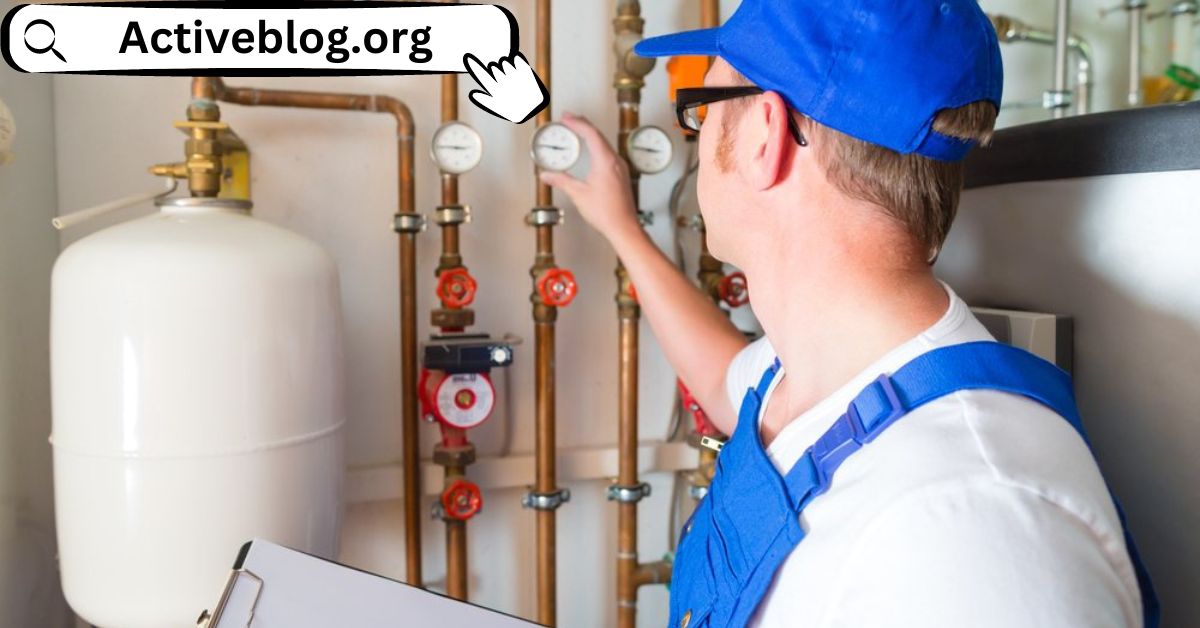When the winter chill begins to bite, the thought of a warm and cozy home can be the most comforting. And what plays a pivotal role in making this dream a reality? Your heating system. For those considering upgrading, installing, or simply curious about heating systems, this guide will take you through the nuances of heating contractors.
The Heart of Heating: Understanding Systems
A. Central Heating Systems
Central heating systems are designed to distribute warmth throughout your entire house. They are the most common type of heating system and include three main types:
- Furnaces: Furnaces can run on gas, oil, or electricity. They work by heating air and forcing it through ducts or vents to distribute warm air throughout the house. This is known as forced-air heating.
- Boilers: Boilers use water and steam to radiate heat. They heat water, circulating through pipes and radiators or radiant floor systems. The heat is transferred to the rooms via radiation and convection.
- Heat Pumps: Heat pumps are energy-efficient systems that absorb heat from the outside environment (even in cold weather) and transfer it into your home. They are an environmentally friendly choice because they transfer heat rather than create it.
B. Direct Heating Systems
Direct heating systems produce heat at the location where they are situated. These include:
- Gas-fired space heaters: These devices burn natural gas or propane to produce heat. They are typically used to heat specific rooms or areas.
- Electric space heaters: Electric heaters convert electricity into heat and are also used for localized heating. They are convenient but can be less energy-efficient compared to central systems.
- Wood-burning appliances: These include wood stoves and fireplaces. They burn wood to produce heat and are often used as a supplemental heat source.
C. Ductless Heating Systems
Ductless heating systems, also known as mini-split systems, do not require ducts. They consist of an outdoor unit connected to one or more indoor units. Each indoor unit can be controlled separately, making them an efficient option for heating individual rooms or zones in your home.
- The Installation Process: From Start to Toasty Finish
A. Evaluation and Assessment
Before installing a heating system, professionals will evaluate your home’s specific heating needs. This includes considering factors like the size of your home, insulation, climate, and your preferences for energy efficiency and comfort.
B. Choosing the Right System
Selecting the ideal heating system is a pivotal choice. It hinges on factors such as the size and layout of your space, local climate, budget, and priorities concerning energy efficiency and environmental impact. Seeking expert guidance can be instrumental in making a well-informed decision
C. Installation
Experts will place, connect, and test the heating system during installation. This includes setting up all the necessary components, such as the furnace, boiler, heat pump, or mini-split units. Proper installation is essential for ensuring the system operates efficiently and safely.
D. Final Inspection
After installation, a complete check is done to ensure the heating system complies with safety requirements and is operating at peak efficiency. This step is crucial for both your safety and the system’s durability.
- Building Blocks of a Heating System
Every heating system, regardless of type, consists of several key components:
- Thermostat: The thermostat serves as the control panel for your heating system. You may regulate when the system goes on and off and select the desired temperature.
- Burner/Heating Element: This component is responsible for producing heat. In furnaces, it burns fuel (gas, oil, or electricity) to generate heat.
- Heat Exchanger: The heat exchanger transfers heat from the burner to the air (in forced-air systems) or water (in boiler systems).
- Blower/Fan: The blower or fan is used to disperse the warm air throughout your space, ensuring even heat distribution.
- Filter: Filters are essential for purifying the air by trapping particles and dust. Clean or replace filters regularly to maintain good air quality and system efficiency.
- Advantages of Professional Heating Installation
A. Energy Efficiency: Professional installation ensures the heating system is correctly sized and configured, maximizing energy efficiency and reducing utility bills.
B. Enhanced Comfort: Properly installed systems provide even heat distribution, eliminating cold spots and ensuring that your home is uniformly warm and comfortable.
C. Prolonged Lifespan: Correct installation and regular maintenance can extend the lifespan of your heating system, protecting your investment.
D. Safety: Professional installation ensures that every heating system component adheres to safety standards, reducing the risk of accidents and ensuring your family’s safety.
- Top Tips for Maintaining Your Heating System
- Regular Check-ups: Schedule periodic inspections and maintenance by HVAC professionals to ensure your heating system’s health and efficiency. They can identify and address issues before they become major problems.
- Clean Filters: Keep the air filters clean or replace them as the manufacturer recommends. Clogged filters can restrict airflow, reduce efficiency, and affect indoor air quality.
- Seal Ducts: If you have a ducted heating system, ensure the ducts are properly sealed to prevent heat loss and improve overall system efficiency. Leaky ducts can waste energy and reduce comfort.
Conclusion
Your heating system is the unsung hero when achieving a warm and cozy home. Whether considering a new installation or upgrading one, relying on experts for heating installation services is paramount. This ensures not only the security and efficiency of your system but also grants you invaluable peace of mind. As winter draws near, ensuring your home is ready to embrace the season with warmth is essential!










